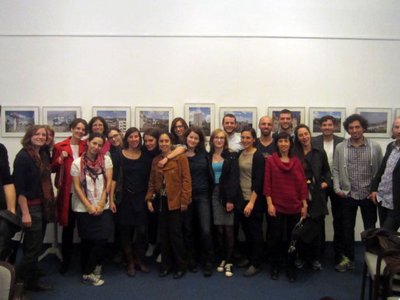

Speakers
- Verónica Mora has graduated in Architecture at the National University of Engineering/Nicaragua and completed an MA in Urban Management and Social Vulnerability at the Universidad Centroamericana (UCA) in Managua. She is coordinator of the appear project Urban_Managua. She currently teaches in the School of Architecture (Faculty of Science, Technology and Environment) of the UCA. Her experience is focused on the social housing sector and the improvement of neighbourhood and housing. Furthermore, she is a member of the Board of Directors of the Prodel Foundation of Nicaragua that promotes local development of low-income sectors.
- Yazid Anani is an Assistant Professor in Architecture, Urban Planning and Landscape Architecture at Birzeit University, Ramallah. He is the current head of the Academic Council of the International Academy of Art Palestine. His work and research interests focus on colonial and post-colonial spaces as well as themes in architecture, neoliberalism and power. Anani received his doctorate degree in Spatial Planning from the TU Dortmund, Germany in 2006. He is active in a number of collectives and projects, such as Decolonizing Architecture Art Residency (DAAR), RIWAQ Biennale and Ramallah Syndrome. He has curated and co-curated several projects, such as Palestinian Cities: Visual Contention, Ramallah—the fairest of them all?, Between Ebal and Gerzim, and has produced individual and collaborative critical projects mainly related to public space, such as Al-Riyadh and Urban Cafés. He’s currently the curator of the 4th edition of Cities Exhibition of Birzeit University Museum, Jericho—beyond the celestial and terrestrial. Anani has lectured worldwide and has taken part in many conferences and seminars related to the issues of urban transformation and neocolonialism. As a EUME Fellow in Berlin, he will work on a project entitled: “Spatial Change and the Construction of Palestinian National Identity”.
Facilitator: Friedbert Ottacher, Senior Development Expert and Lecturer
Framework programme
The framework programme consists of a short movie from Nicaragua which was produced by students from the Vienna University of Technology and the photo exhibition “Palestinian Rurbanity.”
La Candelaria Suena - movie will be shown at 4.30 pm
Idea, concept and design idea: Cornelius Holzer, Moritz Polacek, Christoph Wannerer
Camera/ edit: Christoph Wannerer
La Candelaria is a centrally located neighborhood in Managua, Nicaragua, with an approximate population of 2,500, most of who took possession of this stretch of land in the aftermath of the 1972 earthquake. While this barrio used to be quite an upmarket residential area in the heart of the city before the disaster struck, La Candelaria’s residents today are facing tremendous challenges and problems. From a glorious past to an unsettling presence. And, what will the future hold? La Candelaria dreams...
Palestinian Rurbanity - photo exhibition opens after the discussion: A formal characteristic of the fast-growing region of Ramallah is the partly topographically related fragmentation, in which town and country merge. It is both, a venue and a result of a dialectic between tradition and modernity, poverty and fast money, upheaval and resignation in a centre of the Palestinian state, characterized by limited internal autonomy and extensive external isolation.
Martin Grabner, born 1979 in Graz, photographs, writes and teaches architecture. He studied architecture and photography, teaches at Graz School of Architecture, TU Graz and writes on architecture, art and city. As photographer he works on the relationship between human, architecture and city/landscape.
Downloads
-
Invitation APPEAR in practice_4PDF·649 KB
-
Presentation URBAN_MANAGUAPDF·2 MB
